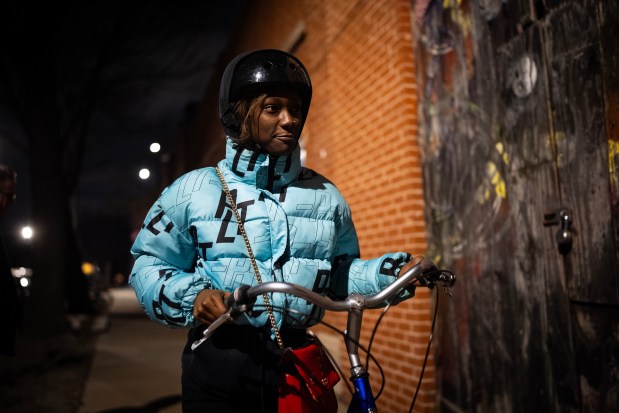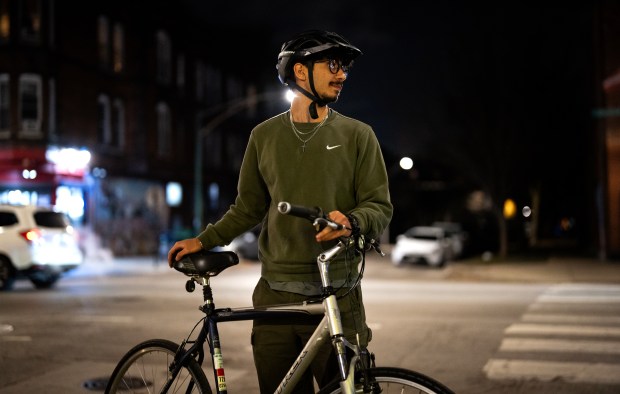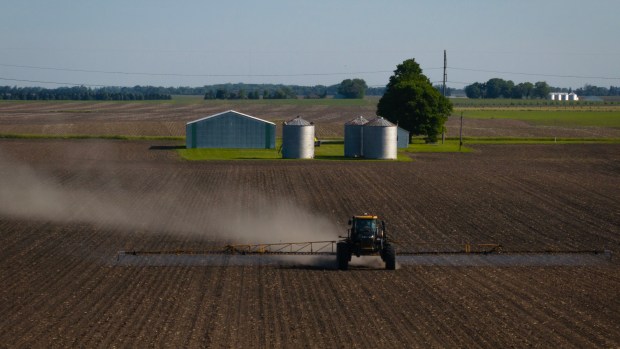The Chicago Department of Transportation completed 10 projects in the last year near schools around the city to improve pedestrian and cyclist safety following crashes involving youths.
High school students participating in the nonprofit West Town Bike’s after-school program told the Tribune that while they prize the time with friends, exercise and freedom to travel the city that they get from cycling, their routes don’t always feel safe.
To make Chicago streets safer for young people to walk and bike, the students proposed a range of solutions, from fixes on specific roads to encouraging city planners to experiment with new ways to separate bikes from traffic. Their ideas didn’t always require changes to the built environment but rather a shift in perspectives.
Here’s more of what they had to say:
David Harb, a senior at Lane Tech High School, said the safety tips he learned as a youngster participating in a Bike to School event at his elementary school continue to help keep him safe today.
“I never would have learned the different hand signals and I feel like that’s kept me much safer,” he said of motions cyclists use to alert cars they will be turning. Harb suggested more schools participate in the annual national Walk and Bike to School Day, particularly high schools whose students are more likely to commute by bike or on foot than the elementary students that events tend to be geared toward. “That would help without any construction on roads — changing something as simple as teaching kids how to use hands to communicate with cars and other bikers.”
But there’s one design feature Harb said he’d like to see more broadly implemented. “I prefer roundabouts to stop signs. A car isn’t just gonna come and zip through. You can blow a stop sign, but you can’t blow a roundabout.”
Kaniyah Hale, a Lake View High School student, doesn’t yet own a bike. She’s doubtful she’d ride to school even if she did, given cold weather and the length of her commute, which is currently an hour and a half by bus.
As a participant in West Town Bike’s program, Hill has spent weeks learning how to fix bikes, alongside students who ride regularly. She was shocked to learn about the number of collisions that occur and advocated for steeper penalties for drivers at fault in crashes with cyclists or pedestrians. “Give those people their justice,” she said. “A consequence should be put out.”

Armand Dunkines, a senior at Roberto Clemente Community Academy, advocated in favor of widespread community engagement. Like many of the students, Dunkines said he appreciates the expansion of cycling lanes in the city. But he’s not convinced that investments always occur where they are most needed, including a stretch of North Avenue where the westbound bike lane stops at a certain point, where he was recently hit.
“We should really experiment more with what works and what doesn’t. Not in the sense of ‘Let’s throw it at the wall and see what sticks,’ but let’s use data and analytics to see what roads should and shouldn’t be implemented for bike lanes. Because some roads really deserve to be bike lanes and some obviously shouldn’t,” said Dunkines, who added that he’d like to see better enforcement of traffic laws and speed limits, on the weekends in particular.
Tamara Scott said that although her dad rides a bike for transportation, she estimates there’s only a 50-50 chance that if she owned one, she’d ride it from her home on the West Side to her high school downtown. “I don’t think it’s really safe to ride bikes on the street because even when they put down bike lanes, there’s still cars who get in the bike lane, driving as if they don’t know,” she said. Learning how to fix bikes in the after-school program has affected more her as a new driver rather than a cyclist, Scott added.
“Being a new driver and being on a bike made me think about that. A person driving can’t just drive for themselves — they’re not the only one using the road.”
Christopher Garcia, a senior at Intrinsic Schools’ Belmont campus has become such a dedicated cyclist that he occasionally bikes to the lakefront with friends to catch the sunrise before school. He also rode his bike once to Wisconsin and often participates in races at trails on the East Side of the city. He said he wishes spaces for bikes separate from cars were more of a norm rather than the exception. “There should be an infrastructure where there’s small streets for cyclists and big streets for cars and in the middle, those streets can be like cooperatives between cars and bikes.”




